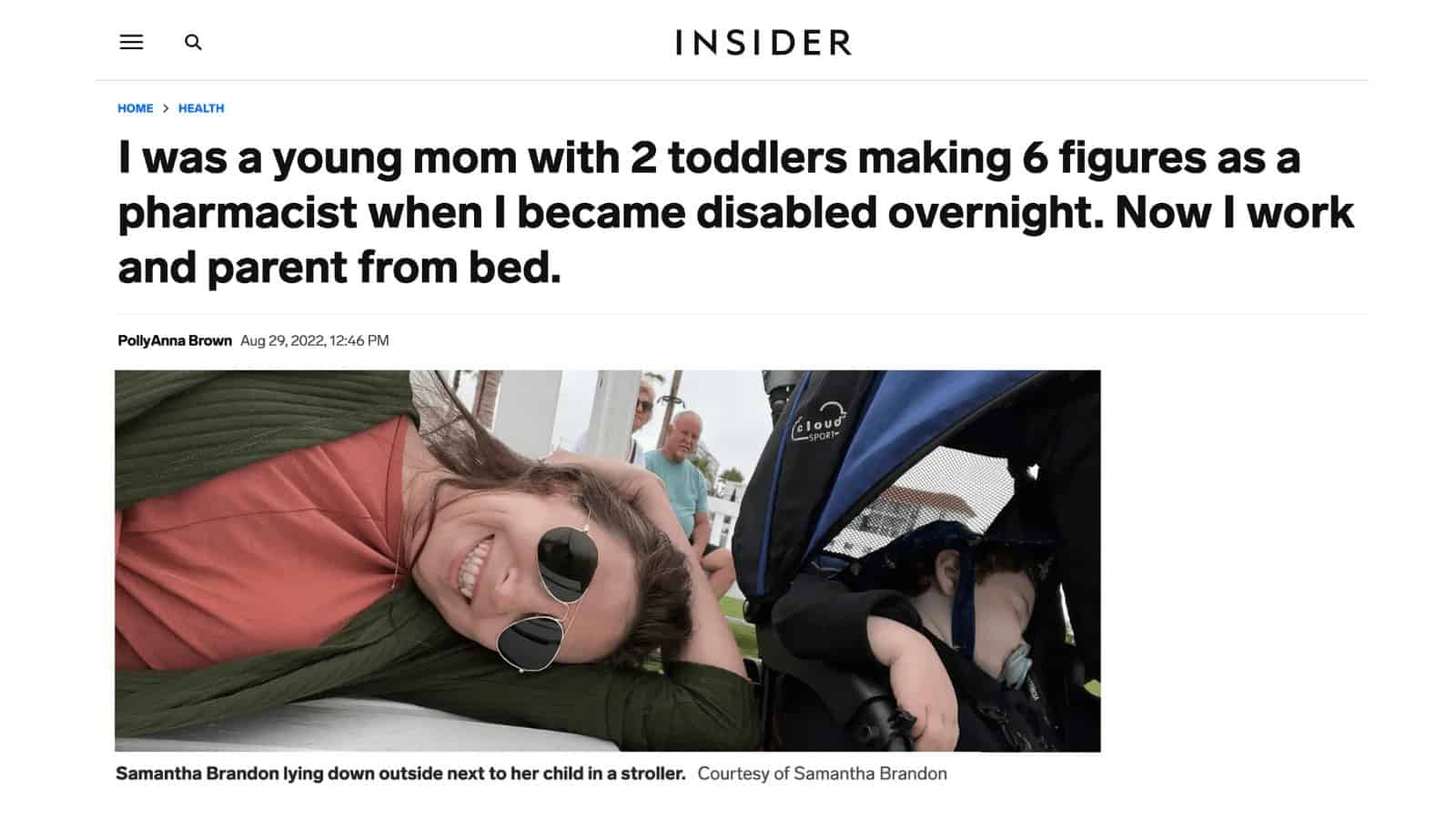Like so many people who experience iatrogenic spinal cerebrospinal fluid (CSF) leak, Samantha Brandon had no idea how risky a routine lumbar puncture could be—until she found herself disabled from it.
“Basically overnight, I went from being a successful pharmacist making a six-figure salary to a bedridden mother of two,” she says. “Now, I’m dealing with an invisible illness — by looking at me, you’d have no idea that I’m disabled, but my daily life has been profoundly affected.”

In this article published on Insider.com, Samantha explains that even though she may look healthy at first glance, she can only be upright for minutes at a time. Even more concerning to her is how it impacts her ability to function as a parent.
“I’m not only stuck in a horizontal position most of the time but also not allowed to lift my children. My son was 7 months old when this issue started, so I haven’t been able to pick him up for the majority of his life,” she says.
You can read Samantha’s full story here.
Reducing the risk
Lumbar puncture is the most common cause of spinal CSF leak. This post from several years ago shares some research on post-dural puncture leaks and their causes, and outlines ways in which the risk of puncture can be reduced for patients.
The main points stressed in the post are that we know that there is a lower risk of post-dural puncture headache (PDPH) when:
- the procedure is performed by more experienced clinicians (angle of approach, number of attempts),
- the lateral decubitus (side-lying) position is used rather than sitting upright,
- a less traumatic type of lumbar puncture (LP) needle (pencil-point vs sharp or cutting) is used.
Physicans who follow these simple guidelines can greatly reduce the risk of PDPH to their patients.
You might also be interested in:
A spinal fluid leak derailed my life of travel and food, but taught me to find beauty in the small things
Jodi Ettenberg writes for CNN Travel about what she’s learned while creating a life for herself after a lumbar puncture gone wrong, and what it means to live with spinal CSF leak.
